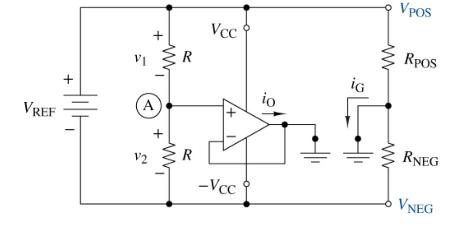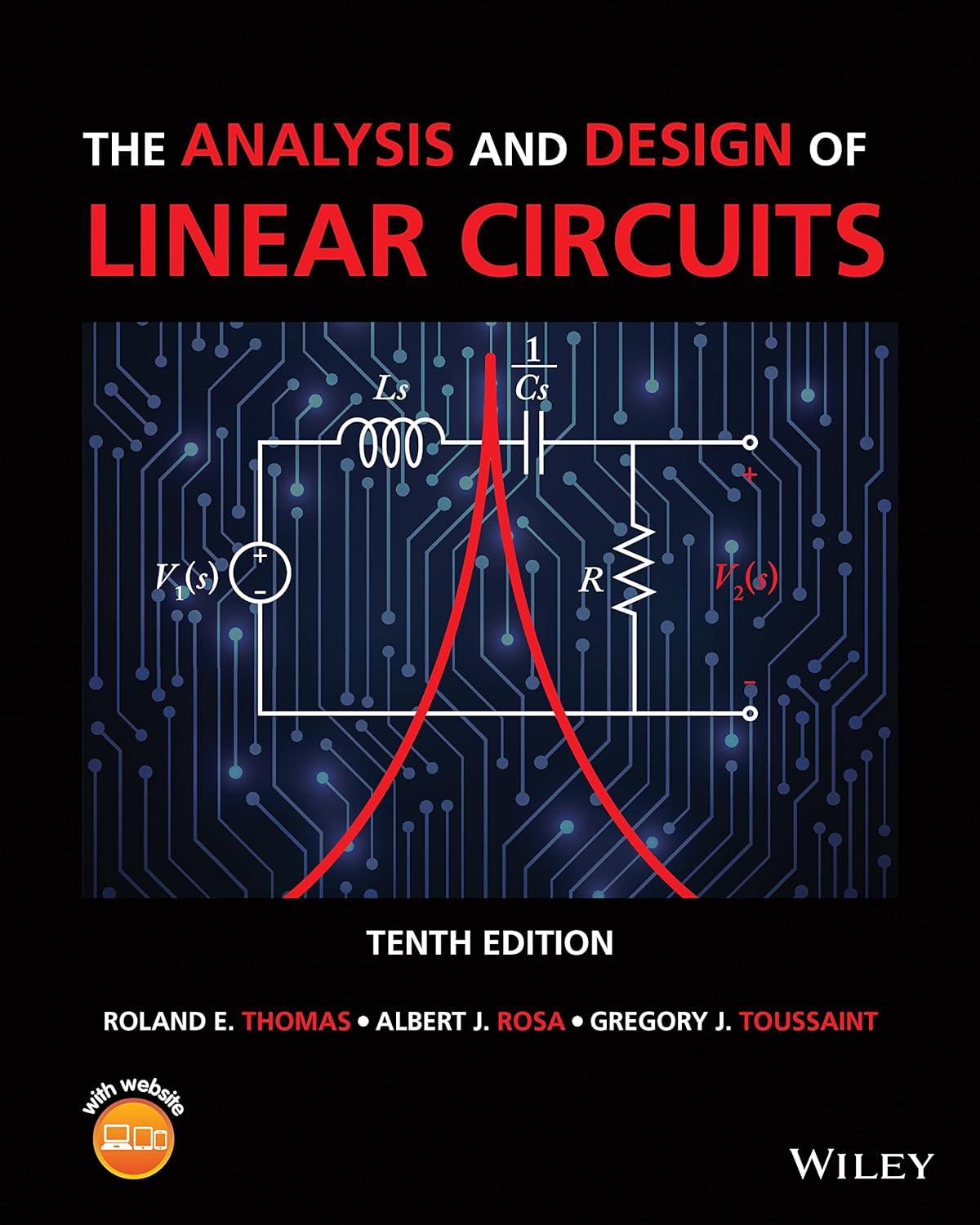The circuit in Figure P4-72 produces bipolar power supply voltages (V_{text {POS }}>0) and (V_{text {NEG }}0).
Question:
The circuit in Figure P4-72 produces bipolar power supply voltages \(V_{\text {POS }}>0\) and \(V_{\text {NEG }}0\). Note that the OP AMP output is grounded and that its \(+V_{\mathrm{CC}}\) and \(-V_{\mathrm{CC}}\) terminals are connected to \(V_{\mathrm{POS}}\) and \(V\) NEG , respectively.
(a) Show that \(V_{\mathrm{POS}}=+V_{\mathrm{REF}} / 2\) and \(V_{\mathrm{NEG}}=-V_{\mathrm{REF}} / 2\) even if the load resistors \(R_{\text {POS }}\) and \(R_{\text {NEG }}\) are not equal.
(b) If \(R_{\text {POS }}\) and \(R_{\text {NEG }}\) are not equal, a current \(i_{\mathrm{G}}\) must flow into or out of ground. How does the ungrounded voltage source \(V_{\text {REF }}\) supply this ground current?
(c) In effect, the OP AMP creates a "virtual ground" at point A \(\left(V_{\mathrm{A}}=0ight)\) but draws no current in doing so. Why not just connect point A to a "real ground" and do away with the OP AMP?
Step by Step Answer:

The Analysis And Design Of Linear Circuits
ISBN: 9781119913023
10th Edition
Authors: Roland E. Thomas, Albert J. Rosa, Gregory J. Toussaint





